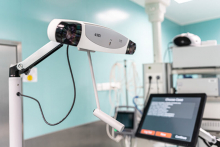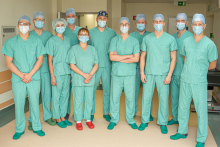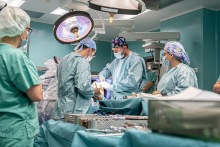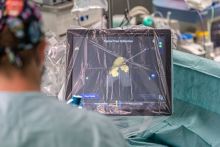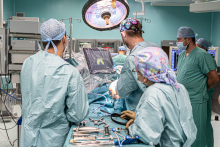By mapping the surface of the affected knee joint during the robot-assisted surgery, no prior X-ray is required - the image is created during surgery. It also allows to perform the procedure with much greater precision. During the insertion of an endoprosthesis, the error limit is only 1 mm, so the human eye is often unable to notice such a small difference. The robot has a sensitivity of 0.5 mm, so the implant is inserted in the best position and in the best way for the patient. The use of a robot is also associated with less soft tissue damage compared to the conventional method.
- Robot-assisted knee endoprosthesis is a breakthrough in treating osteoarthritis. The high-precision device allows for significantly better and predictable treatment results. At the moment it cannot be done better. Usually the soft tissues have to adapt, it takes sometimes six months, sometimes a year. After such treatment, there is no need to wait for adaptation, everything is perfectly balanced. Less disturbance to the bone, less interference with the joint. Patients therefore take less painkillers, less anti-inflammatory drugs and drugs improving circulation," says Artur Stolarczyk, MD, PhD, head of the department, about the NAVIO.
The patient, who underwent a robot-assisted surgery, suffered from osteoarthritis of the knee but had been an active person, moving around independently for many years. Recently her condition had deteriorated, she had great difficulty walking and had to use crutches. She is currently in the hospital and recovering.
The benefits for patients of using the robot include less postoperative pain, earlier rehabilitation, and shorter hospital stays. The patient usually leaves the hospital 2 days after the surgery. This type of procedure also increases implant survival rates while reducing the number of subsequent revision procedures. The NAVIO will remain permanently in our Department and will be used for future surgeries.
Annually in the Department of Orthopedics and Rehabilitation approximately 280 knee replacement surgeries are performed. Thanks to the use of the robot, the Department's team will be able to perform twice as many operations of this type.

